Oregon & PNW Maritime Industry
In the Pacific Northwest, the ocean is not just a backdrop; it is a working partner. From the earliest canoes to modern-day fishing vessels, this coastline has supported hundreds of generations of people as they make their living from the sea.
A Coastline Built for Work
With its deep bays, strong rivers, and sheltered inlets, the Pacific Northwest coastline brims maritime life. With colonization and westward expansion, the region mushroomed into one of the country’s most productive maritime zones. Its ports connect the United States to international trade routes across the Pacific, while its inland waterways support tugboats, shipyards, ferries, and marine research, along with Dory boats.
Along this coastline, fishing fleets have always been at the heart of the maritime story. Salmon, halibut, crab, tuna, and groundfish are just some of the species that drive the commercial fishing economy. From small independent boats to larger vessels operating out of major ports, these fleets supply seafood to local markets and international buyers alike.
Fishing Fleets and Coastal Communities
In towns like Pacific City, the fishing fleet looks different from the larger commercial harbors, but its role is no less important. The dory fleet, unique to this stretch of Oregon coast, launches directly from the beach into open surf. These small boats rely on skill, timing, and knowledge passed down through generations.
The dory fleet represents a rare model of community-based fishing. Most dory boats are family-owned and operated, with strong ties to local markets and a deep respect for the marine environment. This kind of small-scale, sustainable fishing is part of what makes the Pacific Northwest distinct.
In other ports along the coast, larger fleets haul in catches using trawlers, longlines, crab pots, and gillnets. Each method is tailored to the season and species, and every fleet has its own culture and rhythm. Together, they form the backbone of the region’s coastal economy.
Indigenous Maritime Traditions
Long before statehood or commercial fleets, Indigenous peoples were fishing these waters with skill and intention. Canoes carved from cedar allowed for long-distance travel and ocean harvests. Weirs and net systems were designed to catch fish while allowing rivers to thrive. Today, tribal fisheries continue to be leaders in sustainable practices and resource management, blending cultural tradition with modern science.
A Future on the Water
The maritime industry in the Pacific Northwest is constantly evolving. Climate change, ocean acidification, changing regulations, and shifting markets all present new challenges. But the region is also a center for innovation. Fishermen, scientists, and policymakers are working together to build a future where fishing remains both viable and responsible.
The maritime culture here is more than a job. It is a way of life. It is seen in the boats that line the docks, the weathered hands that mend nets, and the community celebrations that honor the harvest. It is present in every coastal town and every working harbor.
At the Dory Center, we celebrate Pacific City’s place in this larger story. The fishing fleets of the Pacific Northwest may vary in size and scope, but they are united by a shared commitment to the ocean, to community, and to the craft of working the water.
Do you have a story to tell?
We’re gathering stories that shaped the shore.
Add yours to help preserve the history, culture, and spirit of the dory fleet.

